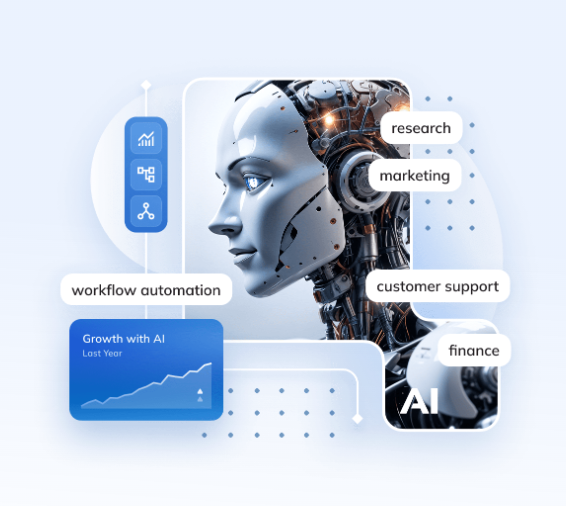In today’s fast-paced digital landscape, businesses are under constant pressure to deliver top-notch customer experiences. As customer expectations rise, companies are increasingly turning to a blend of artificial intelligence (AI) and human support to meet the demand. But when should you rely on AI, and when is human interaction irreplaceable? Understanding the strengths and limitations of both approaches is key to creating an effective and efficient customer service strategy.
This article explores the evolving roles of AI and human agents in customer service, discusses when each should be deployed, and offers insights into building a seamless, hybrid support model.
The Rise of AI in Customer Service
AI has revolutionized customer service by providing fast, scalable, and always-on solutions. Technologies such as chatbots, virtual assistants, and intelligent routing systems are enabling businesses to handle massive volumes of customer queries with minimal human intervention. According to a report by Gartner, by 2027, 25% of organizations are expected to use AI-powered chatbots as their primary customer service channel.
Some of the key benefits of AI in customer support include:
-
24/7 availability
-
Reduced wait times
-
Cost efficiency
-
Consistent responses
-
Data-driven insights
AI systems can process natural language, recognize intent, and provide instant responses to frequently asked questions. This makes them ideal for handling routine inquiries, basic troubleshooting, and transactional tasks such as order tracking or password resets.
For instance, an ai customer service agent can greet users, answer queries, suggest knowledge base articles, and even escalate issues when necessary—all without a human ever getting involved.
The Strengths of Human Support
Despite the impressive capabilities of AI, there are scenarios where human touch is essential. Customer service is not just about solving problems—it’s about building relationships. Human agents bring empathy, critical thinking, and emotional intelligence to the table—qualities that AI, despite its advancements, still lacks.
Humans excel at:
-
Handling complex or sensitive issues
-
Building rapport with customers
-
Interpreting nuance and emotional tone
-
Making judgment calls in ambiguous situations
-
Resolving multi-faceted complaints
Imagine a frustrated customer who has been overcharged and needs a refund. A scripted response from a chatbot could aggravate the situation, whereas a human agent can de-escalate the tension, express empathy, and find a tailored solution.
Comparing AI vs. Human Support
Let’s break down the comparison based on several key factors:
| Criteria | AI Support | Human Support |
|---|---|---|
| Speed and Availability | Instant, 24/7 | Limited by work hours and agent availability |
| Consistency | Uniform responses across all interactions | Can vary based on agent training and mood |
| Personalization | Limited, data-driven | Deep, contextual, emotionally intelligent |
| Scalability | Highly scalable | Requires more resources to scale |
| Cost | Cost-effective after initial setup | Higher ongoing labor costs |
| Problem Complexity | Good for simple, repetitive tasks | Essential for complex, high-emotion cases |
| Decision-Making | Rule-based, pattern recognition | Intuitive, adaptable, capable of judgment |
When to Use AI in Customer Service
Understanding when to use AI effectively can improve efficiency without sacrificing customer satisfaction. Here are scenarios where AI excels:
1. High-Volume, Low-Complexity Inquiries
AI is ideal for handling FAQs, password resets, shipping updates, and other repetitive queries. It can deflect a significant portion of customer tickets, freeing human agents for more nuanced interactions.
2. After-Hours Support
With round-the-clock availability, AI can keep your support line open 24/7. This is particularly useful for global businesses serving customers in different time zones.
3. Multilingual Support
Advanced AI systems can communicate in multiple languages, helping businesses overcome language barriers without hiring multilingual staff.
4. Initial Triage and Routing
An ai customer service agent can act as the first point of contact, gather information, and route the query to the most appropriate department or agent based on predefined rules.
5. Data Collection and Analytics
AI can track user interactions, detect sentiment, and provide actionable insights to improve service processes and customer experience.
When to Use Human Support
While AI can handle a lot, there are situations where human support is irreplaceable.
1. Emotional or Sensitive Situations
Scenarios involving billing disputes, service complaints, or personal issues require empathy and human judgment that AI simply cannot replicate.
2. Complex Problem Solving
Multifaceted issues with multiple variables often need a human’s ability to think critically, ask follow-up questions, and collaborate with other departments.
3. Relationship Management
In B2B scenarios or premium customer support, building long-term relationships and offering white-glove service demands a personal touch.
4. Exception Handling
AI operates based on predefined patterns. When a situation falls outside those parameters, humans are better equipped to analyze and resolve it.
The Ideal Model: A Human-AI Hybrid Approach
Rather than choosing one over the other, the future of customer service lies in collaboration between AI and humans. When properly integrated, AI can enhance human capabilities, not replace them.
Key Components of a Hybrid Model:
-
AI as First-Level Support: AI handles basic queries and performs triage.
-
Seamless Escalation: When AI reaches its limits, it escalates to a human agent with full context.
-
Human-in-the-Loop (HITL): Human oversight ensures AI responses are accurate and empathetic.
-
Augmented Agents: AI tools provide live suggestions, knowledge base links, and sentiment analysis to assist human agents during live chats or calls.
Real-World Examples
1. Banking Industry
Banks use chatbots to help customers check balances or report lost cards. But when it comes to fraud disputes or loan issues, human advisors take over.
2. E-commerce
Retailers deploy AI to answer questions about order status and return policies. For sizing advice or complaints about defective items, human agents step in.
3. Healthcare
AI-powered virtual assistants help patients schedule appointments or access test results, while human staff handle clinical queries and emotional support.
Challenges and Considerations
While combining AI and human support is ideal, businesses must navigate several challenges:
-
Integration Complexity: Ensuring a smooth hand-off between AI and human agents is critical.
-
Customer Frustration: Poorly designed bots can lead to negative experiences.
-
Training Needs: Both AI and human agents require continuous training and updates.
-
Privacy and Compliance: Data handling must meet industry regulations such as GDPR or HIPAA.
To mitigate these issues, companies should invest in user-friendly AI interfaces, regularly audit AI performance, and maintain a robust feedback loop.
Future Outlook
As AI technologies become more sophisticated, their ability to understand context and emotion will improve. Natural Language Processing (NLP), sentiment analysis, and generative AI are already pushing the boundaries of what’s possible.
However, it’s unlikely that AI will fully replace humans in customer service anytime soon. The most successful companies will be those that use AI to empower human agents and deliver seamless, empathetic support.
Conclusion
In the battle of AI vs. human support, there is no clear winner—because it’s not a battle at all. It’s about knowing the strengths and limits of each and using them in harmony. AI shines in speed, scalability, and efficiency, while humans bring empathy, creativity, and emotional intelligence to the table.
By deploying a thoughtful hybrid approach—with AI handling repetitive tasks and humans addressing complex and emotional issues—businesses can elevate their customer service experience while optimizing operational efficiency.
Whether you’re a startup looking to scale or an enterprise aiming to innovate, leveraging both an ai customer service agent and trained human representatives is the key to delivering outstanding service in today’s digital age.

